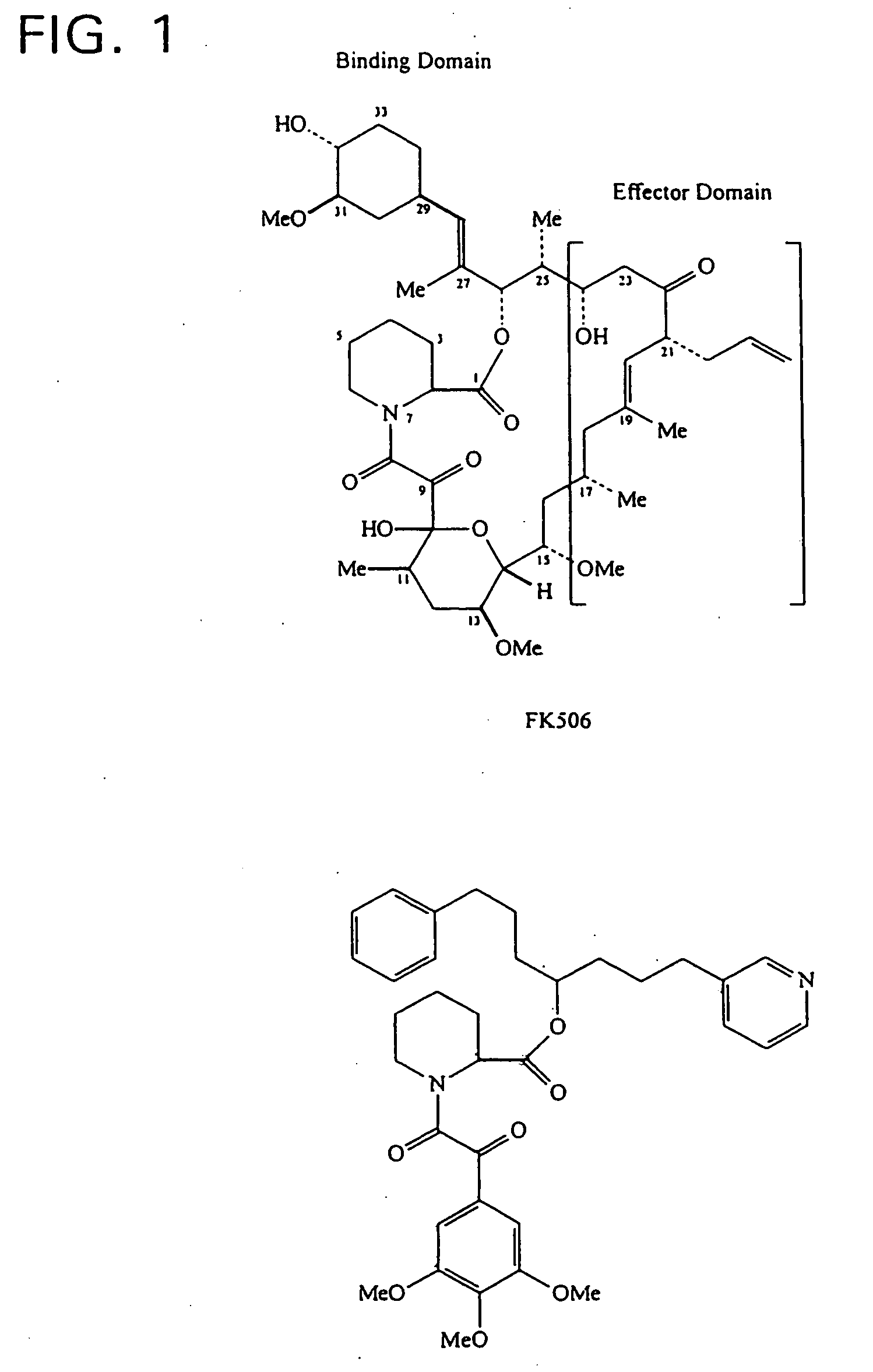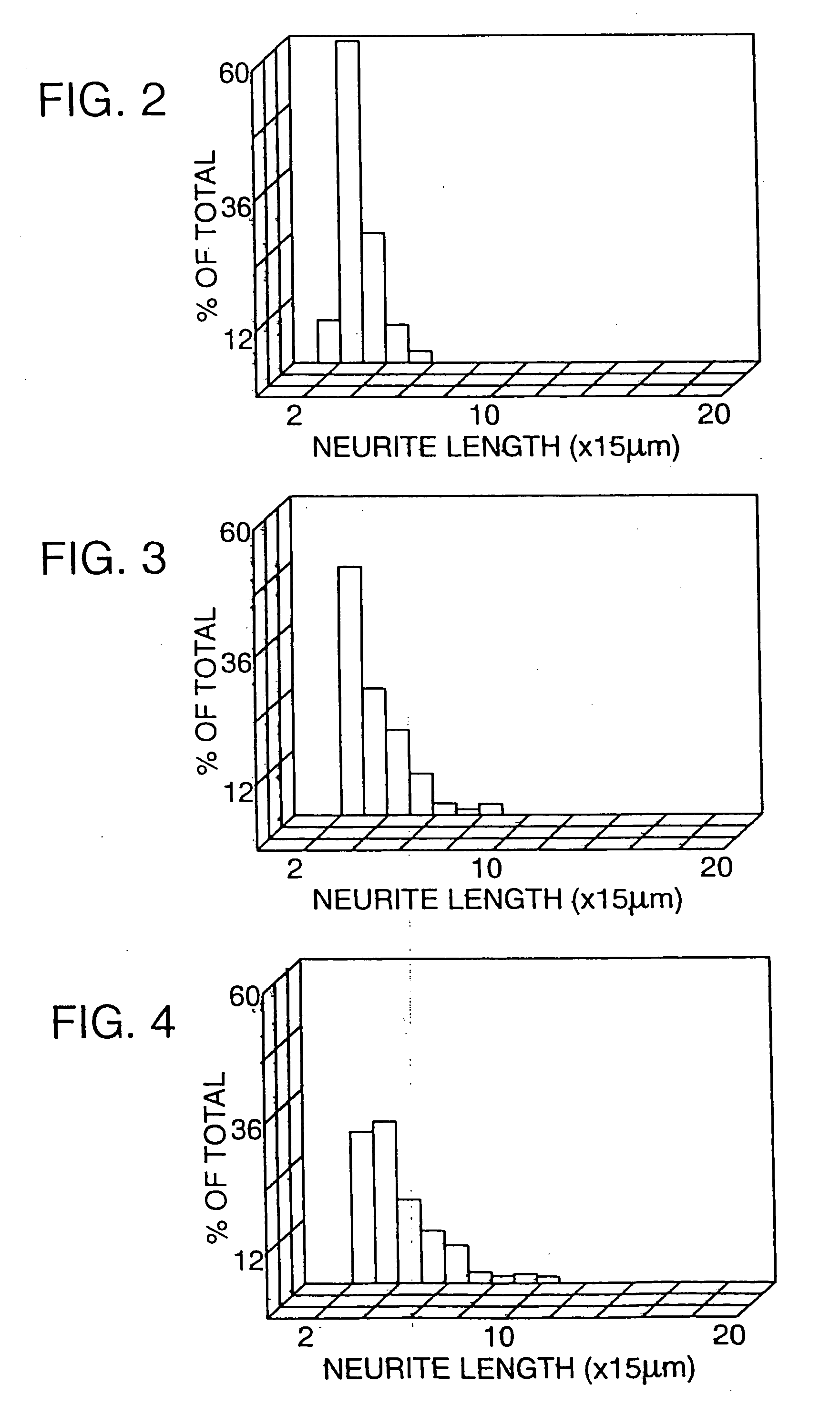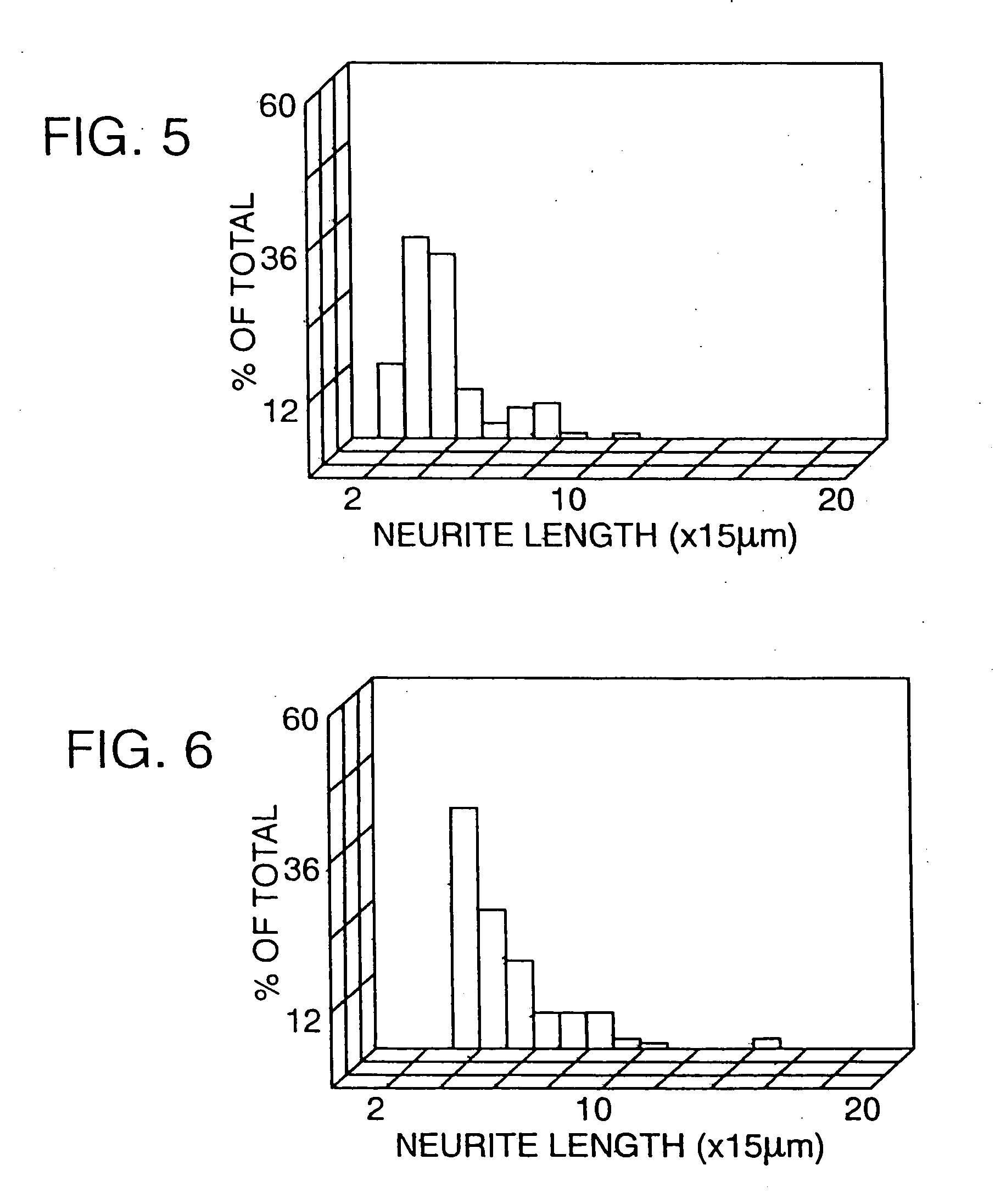Compositions and methods for promoting nerve regeneration
a nerve regeneration and composition technology, applied in the field of compositions and methods for promoting nerve regeneration, can solve the problem of slow rate of axonal elongation (3-4 mm/day)
- Summary
- Abstract
- Description
- Claims
- Application Information
AI Technical Summary
Benefits of technology
Problems solved by technology
Method used
Image
Examples
examples
FK506 and Geldanamycin Promote Nerve Regeneration by a Common Mechanism
Materials and Methods
[0123] Cell cultures. SH-SY5Y human neuroblastoma cells were maintained in DMEM medium (GIBCO) supplemented with 10% fetal calf serum (SIGMA), 50 IU / mL penicillin, and 50 mg / mL streptomycin (GIBCO) at 37° C. in 7% CO2. Cells were plated in six-well plates at 1×106 cells / well and treated with 0.4 mM aphidicolin (SIGMA). At five days, cells were washed, treated with nerve growth factor (NGF) (Boehringer Mannheim, Indianapolis, Ind.) at 10 ng / mL (to induce process outgrowth) in the presence or absence of FK506 (1 and 10 nM) (Calbiochem-Novabiochem Int'l., La Jolla,. CA) and / or geldanamycin (0.1, 1, and 10 nM) (Calbiochem-Novabiochem, La Jolla, Calif.). Media was changed at 96 hours and replaced with fresh media with the compounds (NGF plus FK506 and / or geldanamycin) for an additional 72 hours (total time, 168 hours). The top 50% of axonal lengths were selected for statistical analysis. All e...
PUM
| Property | Measurement | Unit |
|---|---|---|
| molecular weights | aaaaa | aaaaa |
| total time | aaaaa | aaaaa |
| total time | aaaaa | aaaaa |
Abstract
Description
Claims
Application Information
 Login to View More
Login to View More - R&D
- Intellectual Property
- Life Sciences
- Materials
- Tech Scout
- Unparalleled Data Quality
- Higher Quality Content
- 60% Fewer Hallucinations
Browse by: Latest US Patents, China's latest patents, Technical Efficacy Thesaurus, Application Domain, Technology Topic, Popular Technical Reports.
© 2025 PatSnap. All rights reserved.Legal|Privacy policy|Modern Slavery Act Transparency Statement|Sitemap|About US| Contact US: help@patsnap.com



